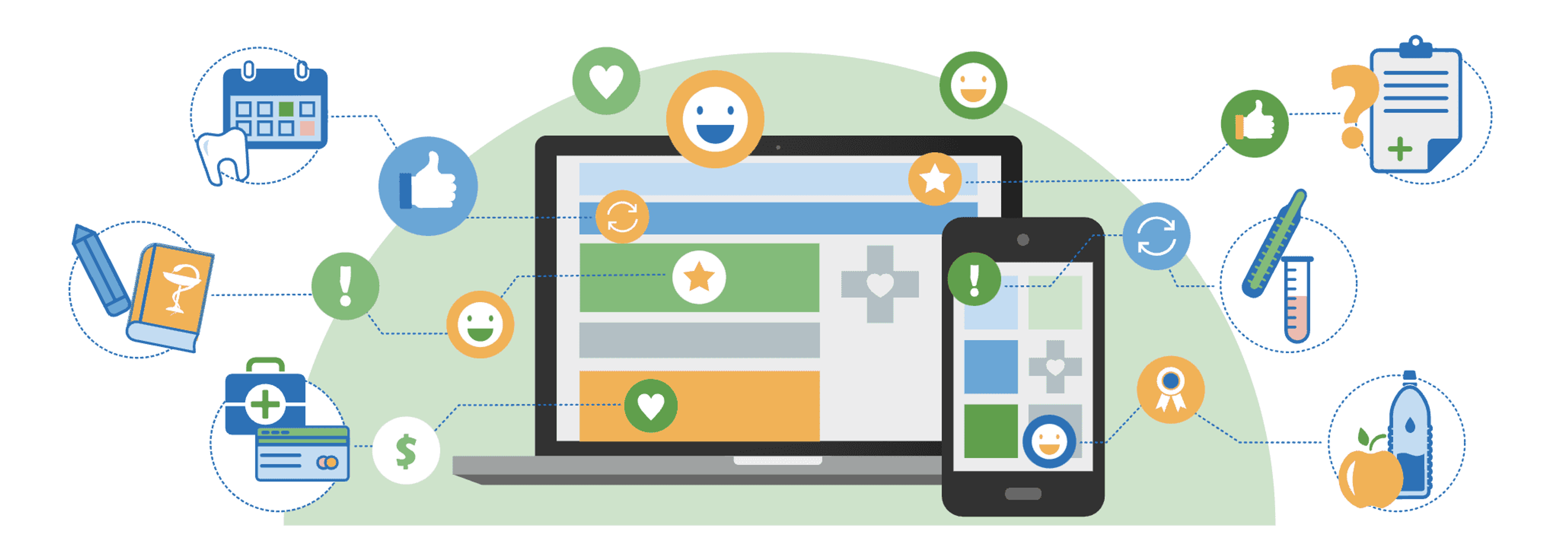blog
6 Things Patient Engagement Software Can Do for You

SECTIONS
In 2023, patient engagement software proves pivotal in revolutionizing the healthcare industry. This technology has democratized patient-provider communication, offering a convenient and efficient means for patients to engage with their healthcare providers anytime. As business operations across industries and general day-to-day activities become increasingly digital-driven, integrating such technologies into healthcare operations is a win-win for providers and patients alike.
Evidence suggests that patient engagement software enhances patient outcomes, reduces healthcare costs, and improves overall patient satisfaction. This guide explains what patient engagement software is and covers its most important uses and benefits.
Key Takeaways:
- Patient engagement software fosters active patient participation in healthcare processes, improving communication, decision-making, and data sharing between healthcare providers and patients.
- Enhanced patient communication and efficient healthcare provider operations through patient engagement software contribute to improved health outcomes, reduced healthcare costs, and increased patient satisfaction.
- The adoption of patient engagement software promotes adherence to care plans, early disease detection, and streamlined health management, thereby minimizing medication-related hospital admissions and preventable deaths.
What Is Patient Engagement Software?

Image Source: ScnSoft.com
Patient engagement software refers to a class of healthcare technology that empowers patients to actively participate in their own care. These platforms are digital tools designed to foster communication, education, and the exchange of health data between healthcare providers and patients.
Common functions of these tools include:
- Appointment scheduling
- Automated reminders
- Telemedicine capabilities
- Prescription refills
- Secure messaging through patient portals
Additionally, these platforms often allow access to personal health records and educational materials, enabling patients to make informed decisions about their care. The primary goal in adopting patient engagement tools is to enhance patient satisfaction, improve health outcomes, and reduce healthcare costs.
By leveraging patient engagement software, healthcare professionals can facilitate a collaborative, patient-centered care model that emphasizes preventative care and chronic disease management. The active involvement of patients in their care that patient engagement software enables is a key component in promoting personalized, effective, and efficient healthcare delivery.
6 Benefits of Patient Engagement Software
Here are some important benefits of adopting patient engagement software tools.
1. Improved Patient Outcomes and Reduced Healthcare Costs
Patient engagement software improves patient outcomes and reduces healthcare costs. These tools empower patients to manage their own healthcare information, communicate directly with healthcare providers, and actively participate in their care decisions.
For instance, patients receiving post-discharge follow-up calls are 50% less likely to return to the ER within 30 days. They report higher satisfaction levels and quicker medication adherence, leading to reduced readmission rates, lower overhead, and resource conservation.
2. Enhanced Communication
Patient engagement software revolutionizes how healthcare providers interact with their patients by automating communication. Over 50% of patients aged 54 or younger prefer digital tools over the phone for appointment reminders and follow-up. Enhanced communication lowers the rate of missed appointments and interruptions in scheduled treatment, elevating the overall level of patient care across the healthcare system.
3. Efficiency Boost and Fewer Data Entry Errors

Image Source: Assets.ResearchSquare.com
By capturing patient response data, patient engagement platforms offer increased visibility and efficiency for medical office staff. They allow them to manage patient appointments and EHR data more effectively, reducing manual work and data entry, which can be both time-consuming and error-prone. Measuring medical data entry error rates across providers is challenging and yields variable results. Nevertheless, recent studies show general entry error rates between 2 errors per 10,000 fields and 2,784 errors per 10,000 fields.
4. Reduced “No Shows” and Additional Revenue Streams
For healthcare organizations, patient engagement software can generate substantial cost savings and additional revenue streams. For instance, missed appointments, or “no shows,” can consume up to 14% of a provider’s revenue. However, most patients who missed an appointment say that a text message or email reminder would’ve helped them attend it, highlighting the potential of digital engagement tools to curb revenue loss and improve patient care and satisfaction.
5. Facilitated Health Management
Patient engagement software facilitates early detection of diseases by enabling patients to actively participate in their healthcare. Over 82% of people are willing to share health records from wearables with their doctors if it helps improve their health. Additionally, 31% expressed interest in connecting with a live health coach that offers 24/7 text messaging for nutrition, exercise, sleep, and stress management.
6. Improved Adherence to Care Plans
Patient engagement software improves adherence to care plans by providing an accessible and convenient platform for patients to manage their healthcare. For instance, 50% of all U.S. patients do not fully adhere to their prescribed care plan, contributing to 50% treatment failures and causing an estimated 125,000 preventable deaths annually.
Overall, 33-69% of medication-related hospital admissions are due to poor adherence. Patient engagement software mitigates this problem by sending reminders and facilitating communication between healthcare providers and patients. With live visibility into patient treatment adherence, providers and intervene earlier and more effectively.
Elevate Your Healthcare Ecosystem with Coperor
Coperor by Gaine is a master data management platform designed for the unique challenges of healthcare and life sciences. Leverage Coperor’s capability to integrate data across your organization and partners, ensuring quality data exchange and boosting patient engagement technologies.
Benefit from a profile-based Operational Data Store for real-time integration of master data and affiliated data, essential for efficient and personalized patient communication. With over 15 years of healthcare specialization, Coperor supports complex, interconnected ecosystems, ready to deploy with a proven library of rules and policies. Embrace the power of data, enable informed decisions, and enhance patient experiences with Coperor, your partner for superior healthcare data management.
To learn more, view a demo of Coperor in action today.
